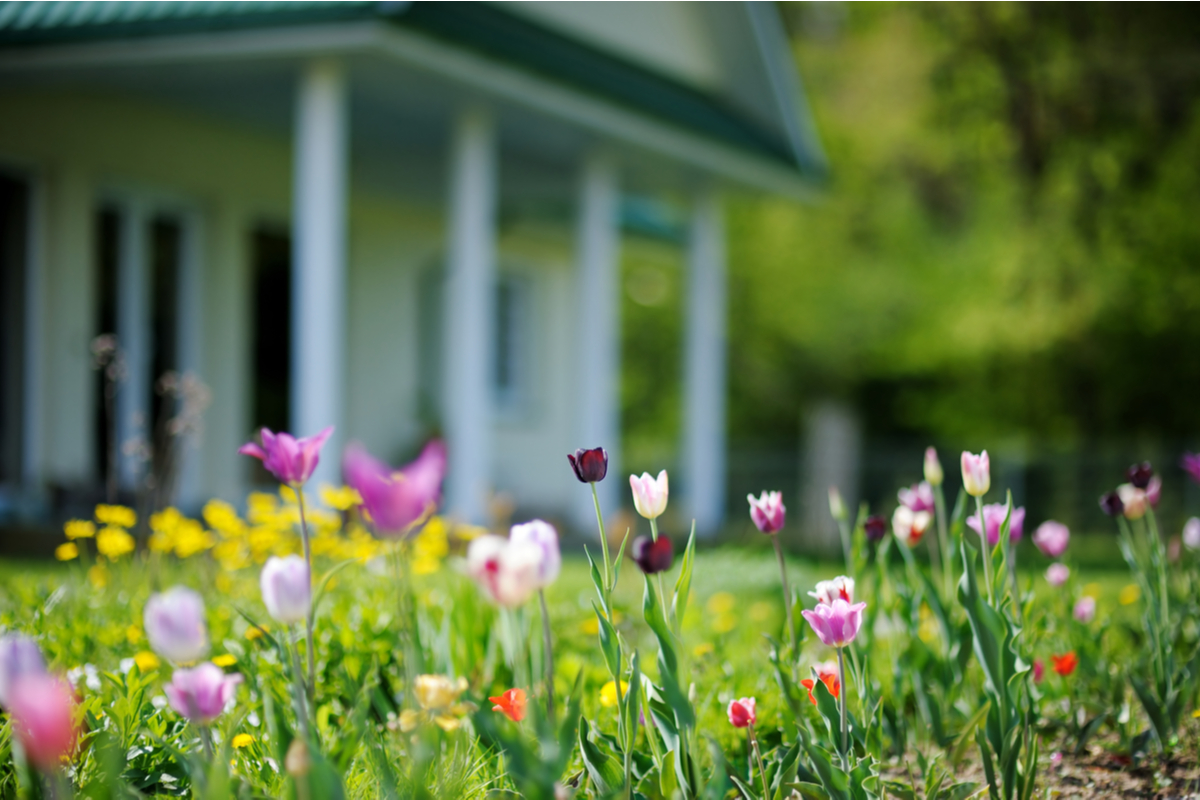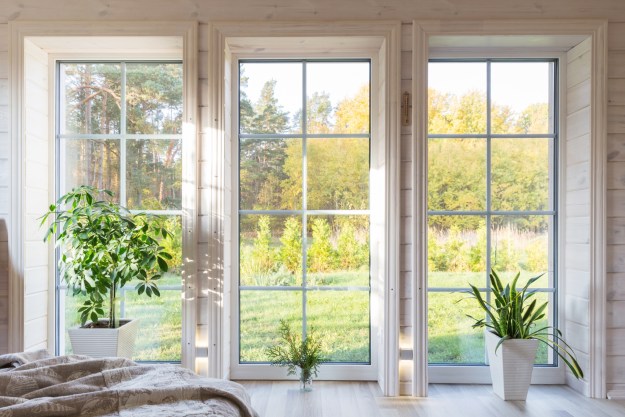The weather will soon be warmer and the days longer, but the effects of winter are still all around your home. That’s why a spring home maintenance checklist is so useful. It can help keep you organized as you prepare your home for summer, and it can save you time and money on unnecessary repairs. Here are some commonly neglected items, both indoors and outdoors, that should be on every homeowner’s spring checklist.

Outdoor spring home maintenance checklist
If you live in a region with cold weather, the exterior of your home takes quite a beating in the winter. The impact that snow, ice, and freezing temperatures have on the home’s structure can make any homeowner nervous. The good news is, you can save yourself some big headaches if you’re diligent about inspecting your home in the spring and fixing minor repairs before they become major problems.
Check for and repair damage to roofing
The weight of just a few inches of snow can do damage to your home’s roof. Particularly when it comes to older roofs, one big snowfall in the beginning of winter can let in moisture or even cause a leak. Grab your ladder, safety equipment, and a buddy, and climb up to your roof to take a peek. Loose shingles, broken shingles, and popped nails will need to be replaced.
Check for and repair concrete and asphalt damages
Another woe of freezing weather is that it can damage concrete and asphalt. Examine your driveway, concrete stairs, walkways, and patios for any visible cracks. Even if the crack is minor, if water gets inside of it and freezes, it will expand the crack and require an even more expensive repair. It’s a good idea to repair the crack while it’s small.
Consider an exterior paint job
Spring is the perfect time to paint the exterior of your home since the temperature and humidity won’t negatively impact your paint job. If the outside of your home could use a little TLC, put this project on the list for spring home maintenance.
Consider staining exterior wood surfaces
Cold weather and moisture make wood stain fade quickly. Check your decks, fences, and any other wooden outdoor surfaces to see if they are in need of a good staining.
Check window screens and caulking for damage
Just as your windows should be sealed well in the winter to keep the warm air in, they should also be tightly sealed in the summer to keep the cool air in. Examine the caulking around your window panes to be sure no cracks or gaps exist, and re-caulk if needed. Also, check window screens for tears and holes that might let in bugs when the windows are open.
Clean window exteriors and screens
Get all that grime off of your windows’ exteriors after the long winter. It’s not advised that you use a pressure washer for windows on upper levels since the force could easily break the glass. Instead, climb up on your ladder and clean those windows by hand. Use window cleaner and a squeegee to make them sparkle.
Spring is also a good time to clean your window screens. These you can remove from the window and wipe down with a mild soap and washcloth.

Indoor maintenance and spring cleanup
Winter weather did a number on your home’s exterior, but constant indoor living, dust, and forced heat also have done a number on your interior. Spring is the perfect time to deep clean and make sure your home is in good condition before the warm weather hits.
Get your air conditioner serviced
The time to get your air conditioner checked and repaired is before you need to use it. Make sure to either check and service your outdoor compressor unit yourself or call an HVAC specialist to schedule services.
Clean window interiors and window treatments
Windows get dirty on the inside, too, especially when dust has been prevalent all winter long. Give your window interiors a good cleaning, including the window panes. You should also pull down and wash curtains and dust off blinds while you’re at it.
Clean fabric surfaces like furniture and carpets
Speaking of dust, it loves to settle deep into the fabrics of couches, chairs, and carpets. Get out the carpet cleaner and deep clean carpets, and consider getting your furniture deep cleaned before summer. It will be free of allergens and dust before you host your first summer party.
Deep clean bathrooms and check for grout issues
Hopefully, you didn’t neglect your bathroom too much over the winter, but spring cleaning includes deep cleaning every corner of this essential room. Make sure to scrub your shower tiles and check that there aren’t any cracks or gaps in them. Water getting behind those tiles will cause mold and even wood rot.
Check the attic and basement for pests
If you live in a cooler climate, you probably haven’t seen a bug in months. That doesn’t mean they’re not sneaking around, though. In fact, springtime is when queens of infesting bugs start coming out of hibernation to look for food and good nesting spots. Prime locations are dark, damp areas, so examine your attic and basement for evidence of an impending infestation.
Spring is in the air, or at least it will be soon. That means sunshine, afternoon swim sessions, and outdoor fun is right around the corner. Make sure your home is ready for all that summer action by following this spring home maintenance checklist that covers all your bases.
Editors' Recommendations
- How to find studs in walls if you don’t have a stud finder
- 5 things you should never bother to fix when selling your house
- 7 times you should absolutely choose an eggshell paint finish
- The November home maintenance checklist everyone needs
- The October home maintenance checklist everyone needs




